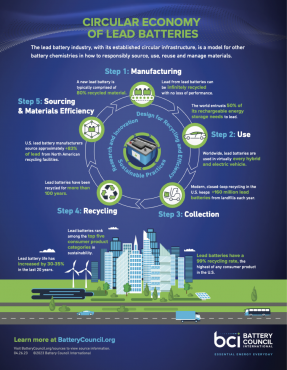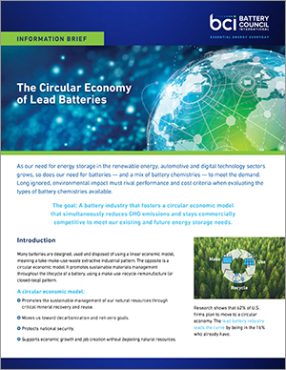
Richard Kluge, Director of Network Infrastructure Systems for Ericsson.
In a world reliant on mobile phones, a service interruption can be more than an inconvenience. It can be life-threatening.
This was acutely apparent during Northern California’s devastating wildfires in 2017 and 2018. Entire communities had no access to 911 and other critical services, due to fires or imposed blackouts to reduce additional fire risk. Access to other essential resources, like medical care, insurance companies and financial institutions, were also severed. And today, during the COVID-19 pandemic, as millions now work from home, our connectivity to the world through our phones is even more important.
Backup Power a Must
The need for reliable communication is so critical that the Federal Communications Commission (FCC) mandates that backup power be available at all times.
To that point, California legislators are considering legislation to ensure that communications don’t fail during the wildfire season if power is shut off. The bill includes proposing a 72-hour backup power requirement – with clean options, instead of diesel generators, when possible – for all parts of the networks, including cell towers. The bill’s sponsor, State Senator Mike McGuire, recently told the San Francisco Chronicle, “What happened last fall is completely unacceptable and it put millions of lives at risk.” His bill is “about keeping the lifeline of millions of Californians up and running during sustained power outages, and that’s their cell phone.”
One person who is intimately familiar with the law and the regulations, and creating infrastructure to keep the lines open, is Richard Kluge. He is the director of network infrastructure systems for Ericsson, a leading provider of information and communication technology that helps telecommunications service providers maintain connectivity.
Kluge was one of five experts who recently spoke on batteries and energy storage at a Capitol Hill briefing on February 12. Battery Council International and Essential Energy Everyday sponsored the event in recognition of National Battery Day, observed
February 18.
Lead Batteries: Proven, Reliable
Kluge pointed out that the phone industry has existed for 140 years, and lead batteries are an essential part of that history.
“When I talk about telephone batteries, telecommunications batteries, I’m not talking about the battery in your iPhone,” Kluge told the audience. “When I say ‘phone battery,’ I’m talking about batteries that are used at the telecom plant. The telecom plant has been using batteries for about 80 years or so, and up until the explosion of energy storage systems, and maybe even still now, we’re the largest single users of stationary energy storage batteries.”
Differences in Telecommunications Plants and Data Centers
Kluge explained how every city has several telecommunications plants. For example, in a large city like New York, there are about 20. Think of them as an older sort-of data center, constructed like a bunker. It’s windowless and virtually indestructible and houses a labyrinth of wires, fiber optics, switching equipment, transmission equipment and batteries that support the millions of phone lines across the country.
“A telecom is a unique occupancy. It shares some similarities with data centers, but it’s a little bit different.”
For example, large telecom offices and cell sites with dedicated generators have three to four hours of battery reserve time. A large telecom office may have over 400 cells and 8,000 gallons of electrolyte. A smaller telecom facility without generators may have eight hours of battery reserve time.
In contrast, a data center has an uninterruptible power supply (or UPS) that is typically much lower, with 10 to 20 minutes to allow a generator to start or a safe shutdown.
Lead Batteries: A Safe Solution
While telecom centers are very concerned about fire protection, they are exempt from fire- suppression systems, such as sprinklers. “They don’t have them and they’re not required. Water and phone equipment don’t mix. The damage to the phone equipment [from water] would cause a large outage.” The solution, described Kluge, is to use fire-resistant equipment and very advanced fire-detection methods, which has resulted in a safe work history.
Lead batteries are part of that solution. “The safety requirements are an area where lead batteries distinguish themselves from lithium-ion batteries used in some energy storage systems. If you look at … the lead battery, it has some enhanced safety qualities. The electrolyte is non-flammable. Even though it’s acidic, it’s 70% water. The rare spills are easy to absorb and neutralize.”
Also, the battery case is plastic and can be made fire resistant. “We asked for the most fire-resistant cases [the 94V-0]. If you ignited it … it would self-extinguish. The few telecom fires we’ve had that I’m aware of were related to installation defects, not battery defects, such as improperly insulated cables, or cables that were too small for the application. If you compare that to the lithium-ion batteries, which are becoming very prevalent, [you’ll find that] many of the lithium-ion electrolytes are highly flammable.”
Kluge showed pictures from a test of an NMC lithium-ion battery energy storage system that was ignited from an external source. At 90 minutes into the test, it activated the sprinkler system, which after 30 minutes, had not extinguished the fire.
A Path Forward
Through his work with two organizations, the Alliance for Telecommunications Industry Solutions and the National Fire Protection Association (NFPA), Kluge helps educate regulators that not all batteries are the same.
“I think it’s important not to hinder the traditional applications and the chemistries [used in] telecoms with an 80-year record of safe use.” However, he said the codes need to differentiate between the safety requirements based on the real hazards.
“One size doesn’t fit all. The standards must be based on the safety of the chemistry, the safety of the application and the safety of the occupancy.” To that end, he said NFPA 855, the international fire code, was updated in 2018 to address firefighter concerns, primarily with lithium-ion proliferation in energy storage applications.
Watch
Full Capitol Hill briefing here. Richard Kluge’s talk begins at minute 35:34.
PowerPoint presentation here.








